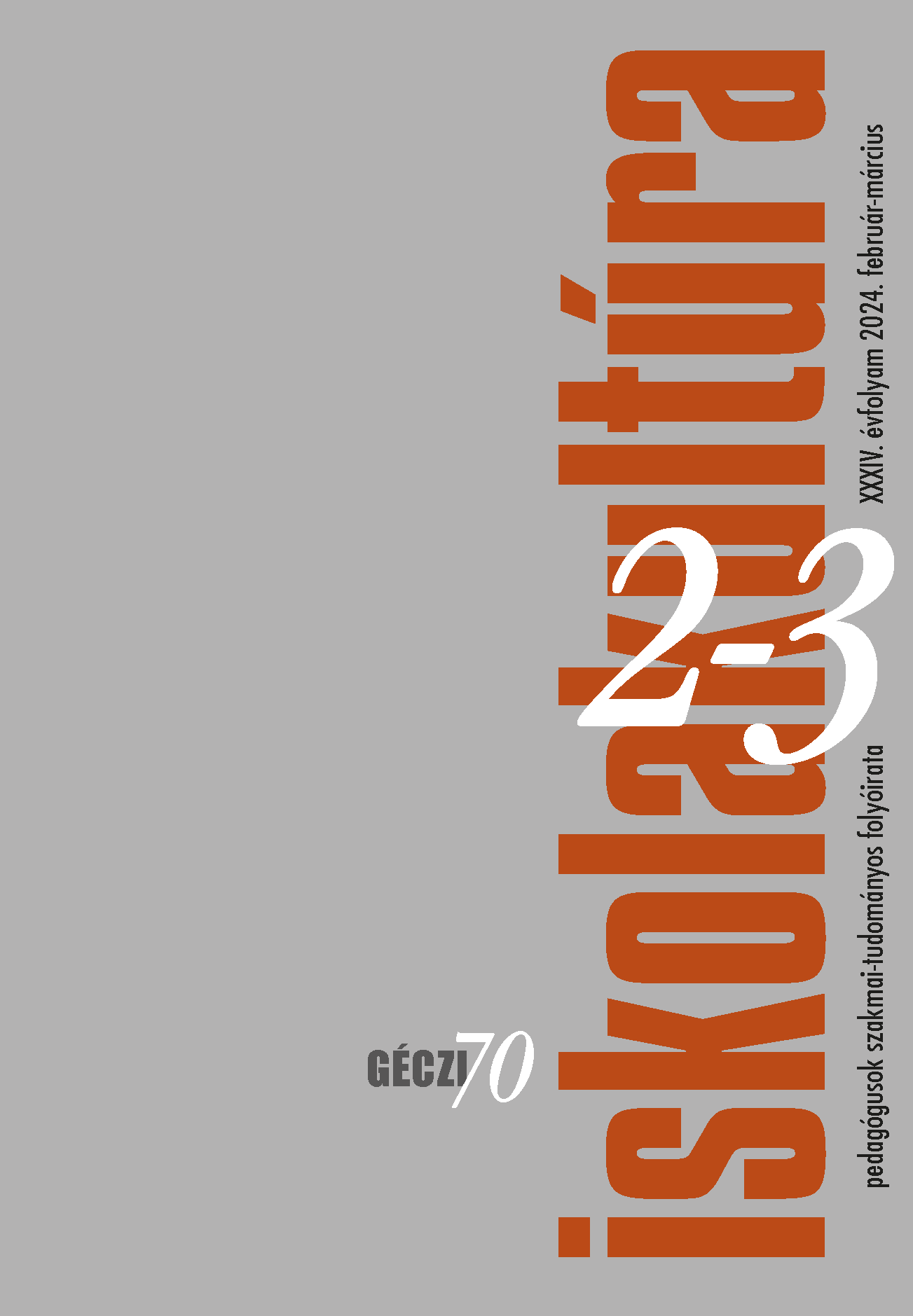Rose in the courtyard of the Moon. The symbolism of the rose in József Attila’s poetry. A study for the 70th birthday of János Géczi
Main Article Content
Abstract
This study examines József Attila’s poetic career through his “rosy” poems. Its aim is to draw an intriguing trajectory by using life events and sentiment analysis surrounding the creation of these poems. The interplay of intellect and emotions, particularly through the motif of the rose, offers a deeper insight into József Attila’s poetry. At the outset of the study, it introduces the reader to the world of “rosy” poems and gradually unveils the connections between the poems and the poet’s life. The motif of the rose is extensively interpreted, presenting its aspects of beauty, passion, and vulnerability, and how it reflects the events and emotions of József Attila’s own life. The relationships between life events and poems continually unfold throughout the study. It is meticulously analysed how, for instance, the poet’s personal relationships and turning points in his life influenced the expression of the respective poems. This analysis, coupled with sensitive sentiment analysis, aids a deeper understanding of the poet’s works and the exploration of emotional content. Furthermore, the study acknowledges that József Attila’s rosy poems not only express beauty, passion, vulnerability, and resistance but also depict various facets of human life and the richness of the human soul. The text intertwines the poet’s personal life with his works, showcasing how life events manifest in poetry, enriching the poetic message both for the creator and the audience.
Downloads
Article Details
References
Angyalosi, G. (2018). A művészi állandó és a művészi változó - a József Attila-próba. HÍD, 6-7., 57–65. https://doi.org/http://real.mtak.hu/88316/1/angyalosi_hid-2018-jun-jul-belso-57-65.pdf Utolsó letöltés: 2023. 11. 29.
Fetykó, J. (2012). „és megmarad a látszat” ... az élethez való ragaszkodás hitében – József Attila haláláról., n.a. Budapest. https://mek.oszk.hu/11000/11070/11070.pdf Utolsó letöltés: 2023. 11. 29.
Földvári, M. (2017): Magyar Színszótár. https://magyar.szinszotar.hu/index.html Utolsó letöltés: 2023. 11. 29.
Géczi, J. (1999). A költészetről — József Attila születésnapján. Palócföld, 45(2), 5-6. https://epa.oszk.hu/03200/03286/00034/pdf/EPA03286_palocfold_1999_2_005-006.pdf Utolsó letöltés: 2023. 11. 29.
Géczi, J. (2007). A rózsa és jelképei a keresztény középkorban. Budapest: Gondolat Kiadó. https://mek.oszk.hu/13500/13536/pdf/13536_2.pdf Utolsó letöltés: 2023. 11. 29.
Géczi, J. (2007). A rózsa jele. Beszélgetés Géczi János biológussal, szimbólumkutatóval. Forrás: Ökotáj, 37-38. szám, 107. http://www.okotaj.hu/szamok/37-38/ot37-20.htm- Utolsó letöltés: 2023. 11. 29.
Géczi, J. (2008). Ikonológia-ikonográfia mint a történeti pedagógia segédtudománya. Iskolakultúra, 2008(1-2), 108-118. https://epa.oszk.hu/00000/00011/00119/pdf/2008-1-2.pdf#page=106 Utolsó letöltés: 2023. 11. 29.
Géczi, J. (2017). A rózsa kultúrtörténete. A reneszánsz (Tézisek). http://real-d.mtak.hu/1226/1/dc_1431_17_tezisek.pdf Utolsó letöltés: 2023. 11. 29.
Horváth, B. N. (2008). A líra logikája: József Attila. Akadémiai Kiadó. http://real-d.mtak.hu/291/4/Horváth, 2008_m%C5%B1.pdf Utolsó letöltás: 2023. 11. 29.
Horváth, K. (2020). Egy sajátos lírai műfajról József Attila, Radnóti Miklós és Kányádi Sándor Verseiben. Hungarológiai Közlemények, 21(1), 50–61. https://doi.org/10.19090/hk.2020.1.50-61
JAT (2020). Szavak kelekezése: Klárisok. https://jatarsasag.hu/wp-content/uploads/2020/09/Szavak_keletkez%C3%A9se_Kl%C3%A1risok.pdf Utolsó letöltés: 2023. 11. 29.
KL - Magyar Katolikus Lexikon, https://lexikon.katolikus.hu/ Utolsó letöltés: 2023. 11. 29.
Laki L. J & Yang Z., Gy (2022). Mondatszintű szentiment analízis teljesítményének javítása adatkiterjesztéses eljárásokkal. Magyar számítógépes nyelvészeti konferencia (18.) https://acta.bibl.u-szeged.hu/75797/ Utolsó letöltés: 2023. 11. 29.
Nemes, N. Á. (1987) Szó és szótlanság. https://konyvtar.dia.hu/html/muvek/NEMESNAGY/nemesnagy00137a_kv.html Utolsó letöltés: 2023. 11. 29.
Panofsky, E. (1984): A jelentés a vizuális művészetekben, Gondolat, Budapest.
Raj, T. (2004). A rózsa a Bibliában és a zsidó közösségben. Eső, 4. évfolyam. https://www.esolap.hu/archive/25/662.html Utolsó letöltés: 2023. 11. 29.
Sipos, L. (2003). „…hiszen lehetnénk jóbarátok.” : Babits és József Attila „találkozásai”. Iskolakultúra, 13(5), 51–55. https://www.iskolakultura.hu/index.php/iskolakultura/article/view/19849 Utolsó letöltés: 2023. 11. 29.
Szabolcsi, G. (1965): József Attila „Dicsértessék” c. versének ismeretlen változata. Tiszatáj, 3. sz. 178-179. https://tiszataj.bibl.u-szeged.hu/3398/1/tiszataj_1956_003_178-179.pdf Utolsó letöltés: 2023. 11. 29.
Szabolcsi, M. (1998). Nyár. in Veres András (szerk.) Alkotói portrék a magyar irodalomból. Horváth Iván, Budapest. https://magyar-irodalom.elte.hu/sulinet/igyjo/setup/portrek/jozsefa/tverdota.htm#tverdota2 Utolsó letöltés: 2023. 11. 29.
Tornai, J (1969). József Attila egyik varázséneke, a Klárisok elemzése. Irodalomtörténet, 51. évf. 1. sz. 803-810. https://epa.oszk.hu/02500/02518/00180/pdf/EPA02518_irodalomtortenet_1969_04_803-810.pdf Utolsó letöltés: 2023. 11. 29.
Tverdota, Gy. (1998). Mi a tétje az időrendnek József Attila gondolkodástörténetében? in Veres András (szerk.) Alkotói portrék a magyar irodalomból. Horváth Iván, Budapest. https://magyar-irodalom.elte.hu/sulinet/igyjo/setup/portrek/jozsefa/tverdota.htm#tverdota2 Utolsó letöltés: 2023. 11. 29.
Újvári, E. (2019). Ikonográfia – korszakok lenyomata és tükre. Per Aspera ad Astra VI. évfolyam,1. sz. 49-62.

